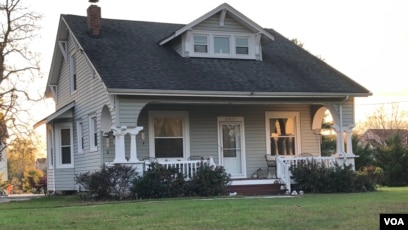Introduction:
The global COVID-19 pandemic has triggered a paradigm shift in the way people perceive and prioritize their living spaces. As lockdowns and remote work became the new normal, the significance of home environments became more pronounced. One noteworthy trend that emerged during these challenging times is the reshaping of housing preferences towards single-family homes. This article explores the impact of the pandemic on housing choices and the growing preference for single-family dwellings.
1. **The Rise of Remote Work:**
One of the most significant consequences of the pandemic has been the widespread adoption of remote work. With more individuals working from home, the demand for spacious and flexible living arrangements has skyrocketed. Single-family homes, with their private spaces and dedicated rooms, provide an ideal setting for remote work, offering the necessary privacy and tranquility that may be lacking in denser urban environments.
2. **Desire for Outdoor Spaces:**
Lockdowns and restrictions on indoor activities have intensified the desire for outdoor spaces. Single-family homes, often accompanied by yards or gardens, have become increasingly appealing to those seeking a respite from confinement. The ability to have a private outdoor area for recreation, gardening, or simply enjoying fresh air has become a priority for many homebuyers.
3. **Family-Centric Living:**
The pandemic has underscored the importance of family and the need for shared spaces that accommodate various activities. Single-family homes cater to this trend, offering multiple rooms that can be repurposed as home offices, classrooms, or recreational areas. The ability to create distinct zones within a home fosters a sense of balance and harmony, supporting the evolving needs of families.
4. **Suburban Resurgence:**
Urban dwellers, facing the challenges of crowded living conditions and limited outdoor spaces, have increasingly turned to suburban areas. The appeal of spacious single-family homes in quieter, suburban neighborhoods has become a driving force in reshaping housing preferences. The desire for a balance between proximity to urban amenities and the tranquility of suburban living has led to a resurgence of interest in suburban real estate markets.
5. **Investment in Home Comforts:**
The extended periods spent at home have prompted individuals to reevaluate and invest in their living spaces. Single-family homes, with their potential for customization and personalization, allow homeowners to create environments tailored to their specific needs. The emphasis on home comforts, such as larger kitchens, home offices, and dedicated workout spaces, has become a defining feature of the shift in housing preferences.
Conclusion:
The COVID-19 pandemic has acted as a catalyst for redefining housing preferences, with a noticeable shift towards single-family homes. The desire for remote work-friendly spaces, private outdoor areas, family-centric living, and the allure of suburban tranquility has propelled this trend. As individuals continue to reassess their priorities, the enduring legacy of the pandemic on the real estate landscape is likely to be characterized by an enduring demand for single-family homes that cater to the evolving needs of a changing world.

